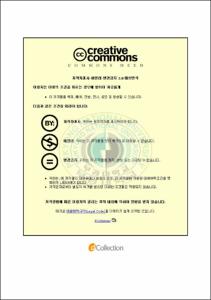전구체 및 첨가제가 나노 α-Alumina 결정 형상에 미치는 영향
- Alternative Title
- Influences of Precursor and Additives on the Morphology of Nanocrystalline α-Alumina
- Abstract
- Alumina ceramics are used in many areas of modern industry both as structure and functional materials because of their hardness, mechanical strength, good corrosion and low cost. It was demonstrated by recent works that nano-size plate-like particles can increase fracture toughness more significantly as compared with the ball-like particles.
The object of this study is to prepare the plate-like nano α-Al₂O₃ by sol-gel method using different precursors(aluminum nitrate, aluminum sulfate) and fluoride additives (AlF₃, MnF₂, CaF₂). The crystalline structures of alumina particles were characterized by X-ray diffraction (XRD) and their particle size and morphology were observed by Field Emission Scanning Electron Microscope (FE-SEM).
The temperature for complete transformation to α-Al₂O₃ changed with precursor and the transformation temperature is lower in the case of using aluminum nitrate precursor as compared to aluminum sulfate precursor. The particles obtained from aluminum nitrate precursor have elongated shape, while those obtained from aluminum sulfate precursor have spherical shape, and it could be attributed to the different characteristics of precipitate formed in the initial stage of reaction. The effect of AlF3 additive on modification of morphology of particles is different depending on the precursor. The change of morphology of α-alumina particles to the plate-like shape was observed in the case of using aluminum nitrate precursor, but not in the case of using aluminum sulfate precursor.
The effect of additive on the boehmite-to-α-Al₂O₃ phase transition was investigated, and AlF₃, MnF₂ and CaF₂ were used as additives. These additives have different ionic radius: 0.05, 0.67 and 0.1 nm for AlF3, MnF2 and CaF₂, respectively. The crystalline phase formed by reaction with the additive at high temperature has a plate-like morphology. A clear relationship was found between the transition temperature and the difference in ionic radius between Al₂+ and the additive (Δr): The transition temperature increased as Δr increased. This result indicates that additives with larger ionic radii are more effective in suppressing the diffusion of Al₃+ and O₂- in γ-Al₂O3 to inhibit the grain growth to α-Al₂O₃, and consequently retarding the transformation into α-Al₂O₃.
- Issued Date
- 2008
- Awarded Date
- 2008. 2
- Type
- Dissertation
- Publisher
- 부경대학교 대학원
- Alternative Author(s)
- Kim, Hae Jeong
- Affiliation
- 부경대학교 대학원
- Department
- 대학원 공업화학과
- Advisor
- 이근대
- Table Of Contents
- List of Tables = ⅲ
List of Figures = ⅳ
Abstract = ⅵ
제1장 서론 = 1
제2장 이론 = 4
2.1. 판상 α-Al₂O₃ = 4
2.1.1. Alumina의 특징 = 4
2.1.2. 나노 크기의 α-Al₂O₃의 특성 = 7
2.2. 첨가제의 역할 = 8
2.2.1. Fluoride 화합물의 역할 = 8
2.2.2. 첨가제양이온의 역할 = 8
2.3. Precursor에 따른 결정형상 = 9
제3장 실험 = 10
3.1 시약 = 10
3.1.1. α-Alumina precursor = 10
3.1.2. Additives = 10
3.2 α-Al₂O₃의 제조 = 11
3.2.1. Precursor에 따른 α-Al₂O₃의 결정형상 실험의 합성 = 11
3.2.2. Additives에 따른 α-Al₂O₃ 결정형상 실험의 합성 = 12
3.3 측정장치 = 13
3.3.1. X-선 회절분석 = 13
3.3.2. FE-SEM분석 = 13
제4장 결과 및 고찰 = 18
4.1. Precursor가 결정형상에 미치는 영향 = 18
4.1.1. Nano α-Al₂O₃의 형성 = 18
4.2. 첨가제가 결정형상에 미치는 영향 = 27
4.2.1. Ethyl alcohol 용매의 효과 = 27
4.2.2 첨가제가 상전이온도에 미치는 영향 = 30
제5장 결론 = 39
5.1. Precursor가 결정형상에 미치는 영향 = 39
5.2. 첨가제에 따른 결정형상의 변화 = 40
참고 문헌 = 42
- Degree
- Master
- Files in This Item:
-
-
Download
 전구체 및 첨가제가 나노 α-Alumina 결정 형상에 미치는 영향.pdf
기타 데이터 / 2.03 MB / Adobe PDF
전구체 및 첨가제가 나노 α-Alumina 결정 형상에 미치는 영향.pdf
기타 데이터 / 2.03 MB / Adobe PDF
-
Items in Repository are protected by copyright, with all rights reserved, unless otherwise indicated.